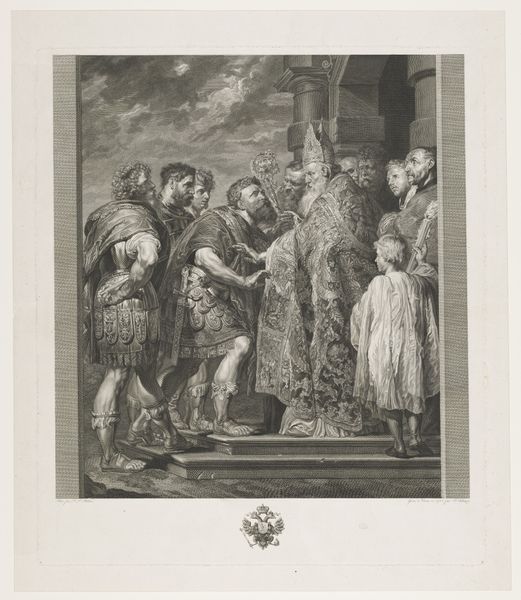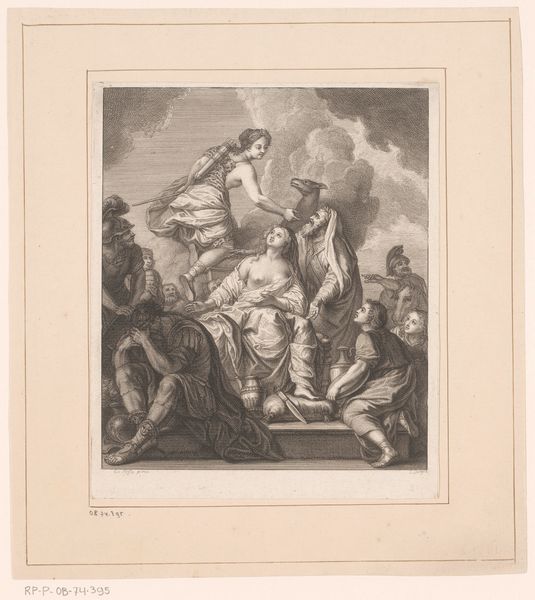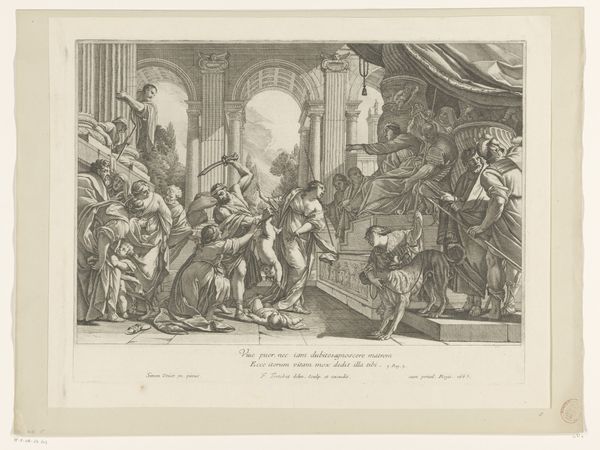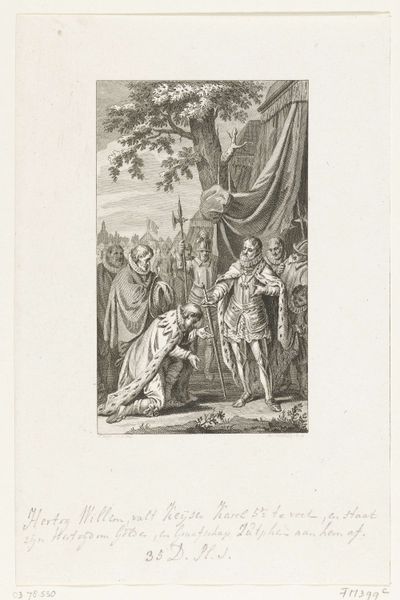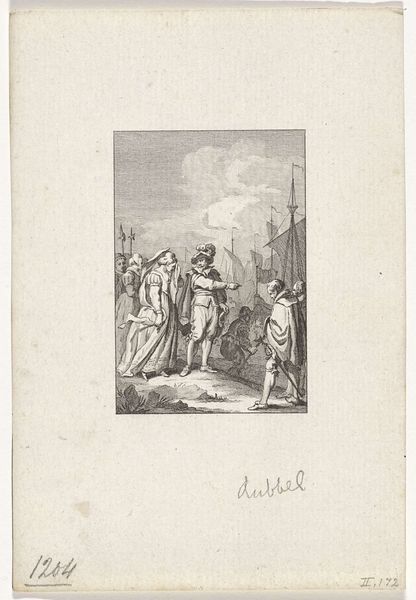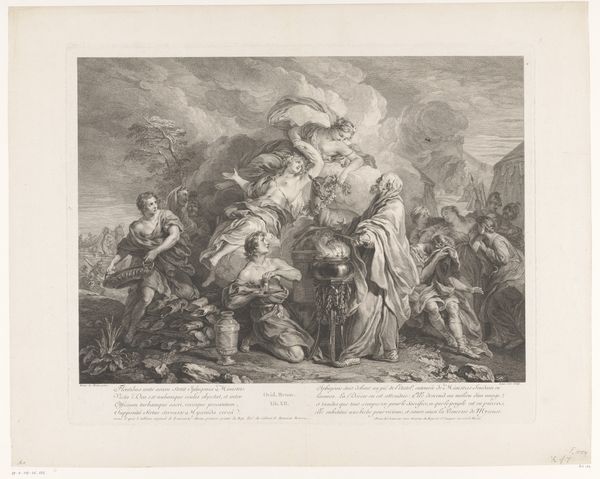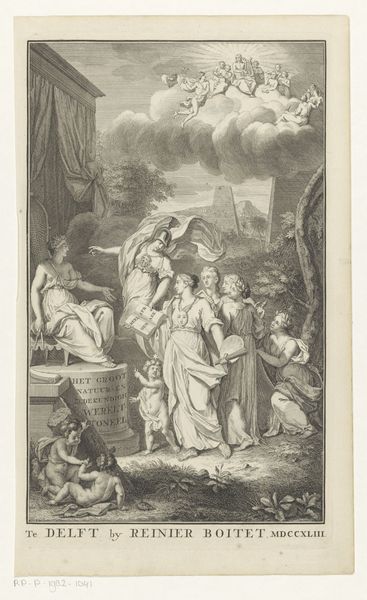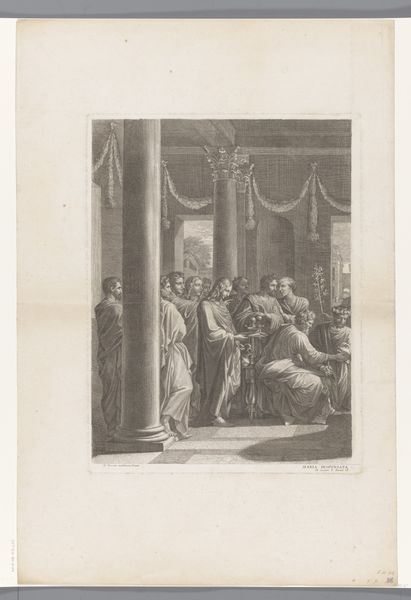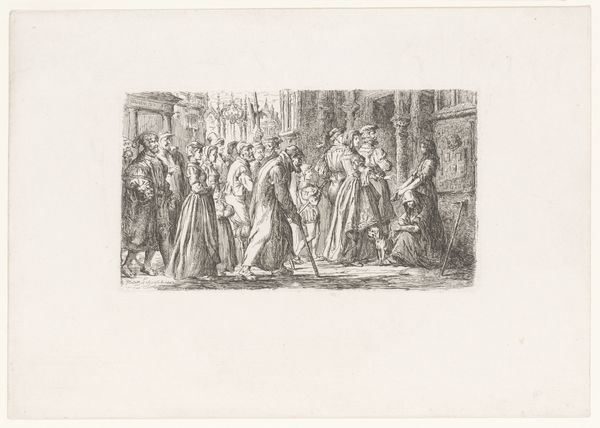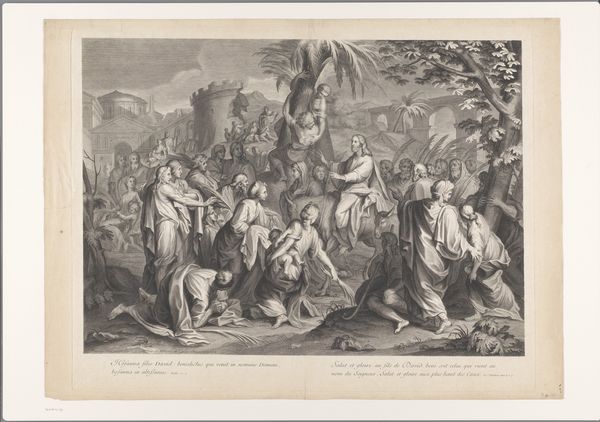
print, engraving
#
portrait
#
neoclacissism
#
narrative-art
#
ink paper printed
# print
#
old engraving style
#
figuration
#
history-painting
#
academic-art
#
engraving
Dimensions: height 203 mm, width 160 mm, height 334 mm, width 236 mm
Copyright: Rijks Museum: Open Domain
Curator: This engraving from 1819 by Louis Pierre Henriquel-Dupont, residing here at the Rijksmuseum, depicts "The Reception of King Henry IV in Paris." It's quite the historical snapshot, wouldn't you agree? Editor: A snapshot printed on paper. I'm intrigued by how Dupont translated this grand event through the precise labour of engraving, meticulously transforming a likely more vibrant source painting, into this stark monochrome scene. Curator: Stark, perhaps, but it also has a theatrical quality to it. Look at the drama of the figures, the heightened emotion… It almost feels like a stage play. Editor: Precisely. Consider the societal function of this print, manufactured en masse and distributed. The work idealises royalty, solidifying a specific historical narrative through reproduction. Was the paper itself locally sourced or from further afield, adding to production costs? Curator: Material concerns, as always! But beyond that, observe how the artist uses light and shadow to draw our eye directly to King Henry IV. It's masterful, in its own way. Don't you find it romantically idealized? Editor: Perhaps. But to whose benefit? Dupont's skillful manipulation of line and tone serves a particular ideology and also serves to bolster the demand for engraved prints – how did those conditions enable his success? Curator: The crowd seems quite taken by the king's arrival. Look at them, clamouring to see him, with what seems like sheer elation. You almost feel caught up in it yourself. It speaks to our longing for leadership and heroism. Or perhaps just entertainment. Editor: Entertainment, certainly, circulated through accessible formats. But let’s consider the skilled engravers laboring over these plates to translate paint to print; it reveals an economic system that is far from ethereal. It brings forth more practical conditions. Curator: So, we have delved into history and materials, from ink and paper to the very ideologies shaping such grand celebrations, revealing complex dialogues about power, access, and cultural memory embedded in something that might, at first glance, seem a straightforward image. Editor: Exactly. An apparently simple historical depiction reveals hidden strata of societal mechanisms if we only question its fabrication.
Comments
No comments
Be the first to comment and join the conversation on the ultimate creative platform.
